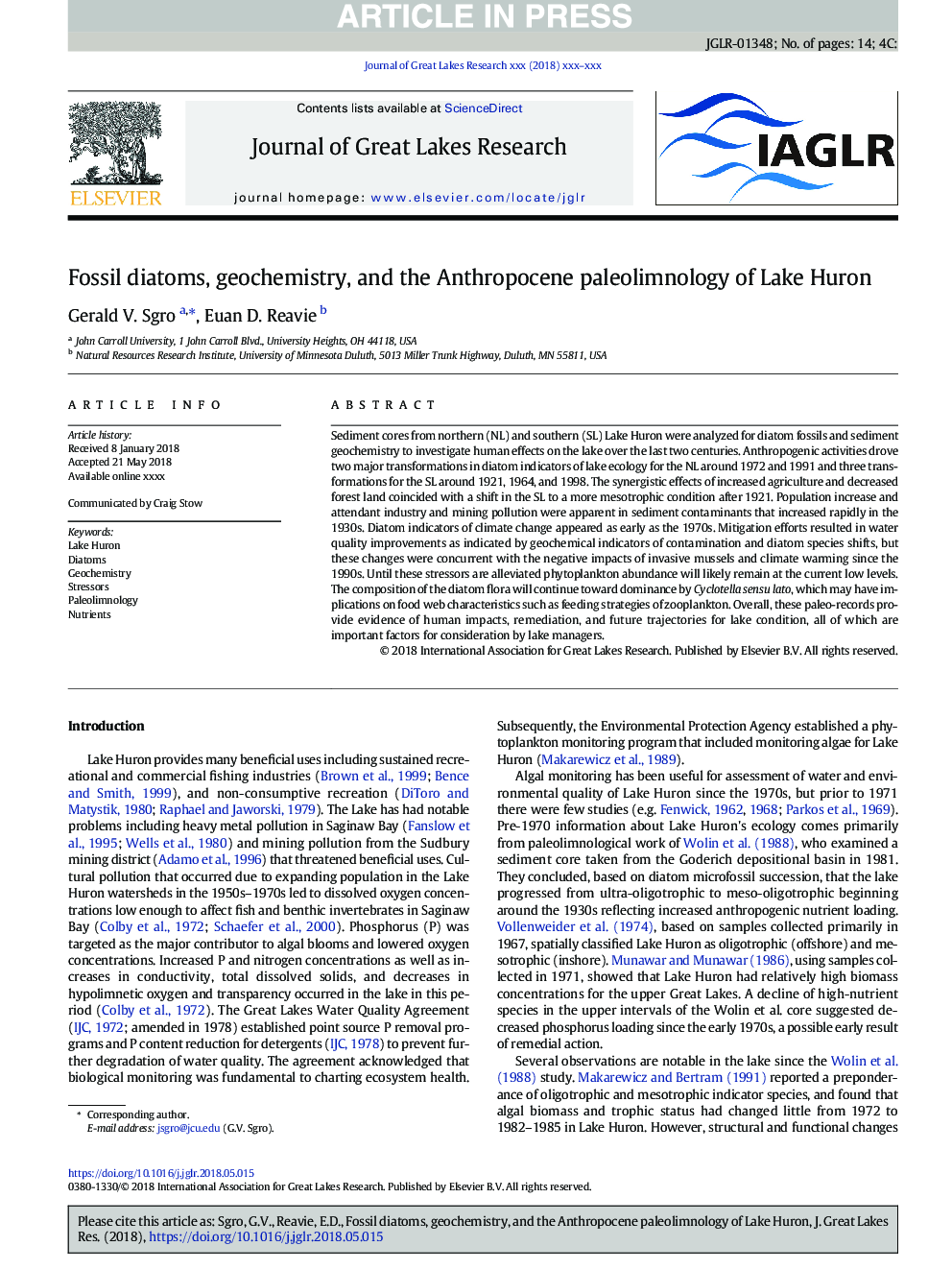| Article ID | Journal | Published Year | Pages | File Type |
|---|---|---|---|---|
| 8849088 | Journal of Great Lakes Research | 2018 | 14 Pages |
Abstract
Sediment cores from northern (NL) and southern (SL) Lake Huron were analyzed for diatom fossils and sediment geochemistry to investigate human effects on the lake over the last two centuries. Anthropogenic activities drove two major transformations in diatom indicators of lake ecology for the NL around 1972 and 1991 and three transformations for the SL around 1921, 1964, and 1998. The synergistic effects of increased agriculture and decreased forest land coincided with a shift in the SL to a more mesotrophic condition after 1921. Population increase and attendant industry and mining pollution were apparent in sediment contaminants that increased rapidly in the 1930s. Diatom indicators of climate change appeared as early as the 1970s. Mitigation efforts resulted in water quality improvements as indicated by geochemical indicators of contamination and diatom species shifts, but these changes were concurrent with the negative impacts of invasive mussels and climate warming since the 1990s. Until these stressors are alleviated phytoplankton abundance will likely remain at the current low levels. The composition of the diatom flora will continue toward dominance by Cyclotellasensulato, which may have implications on food web characteristics such as feeding strategies of zooplankton. Overall, these paleo-records provide evidence of human impacts, remediation, and future trajectories for lake condition, all of which are important factors for consideration by lake managers.
Related Topics
Physical Sciences and Engineering
Earth and Planetary Sciences
Earth and Planetary Sciences (General)
Authors
Gerald V. Sgro, Euan D. Reavie,
